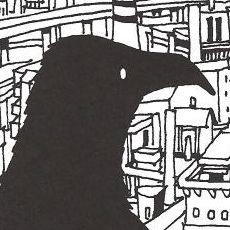Tag: fantasy
-
Digimon Adventure (Movie 1) – Believe me, it really is that good!
/
/ ReviewsRead More →: Digimon Adventure (Movie 1) – Believe me, it really is that good!It’s brilliant to be in this position. The last thing I expected to be writing about is Digimon, but that’s just typical of life; ever twisting, ever unpredictable. So this morning I was reading about Mamoru Hosoda – a rising star of anime who is just now making an international impact with “The Girl Who…
-
It's theEnd of the world! Reflecting on Eureka Seven!
/
/ ReviewsRead More →: It's theEnd of the world! Reflecting on Eureka Seven!It’s taken me two or three months, but today I finally finished watching Eureka Seven. Like whenever I finish reading a book or watching a long TV series, I feel like I’ve accomplished something big, but at the same time, I’ve grown attached to the Gekko-go and I’m not ready to wave good-bye. I adore…
-
Discovering Eureka Seven; mecha and dehumanisation
/
/ ReviewsRead More →: Discovering Eureka Seven; mecha and dehumanisationIn my previous E7 article, “Discovering Eureka Seven; subtext and pop culture“, I briefly touched on the pervasive themes of war laced through out the series, going so far as to compare it to Akitaro Daichi’s post-apocalyptic (underrated) masterpiece “Now and Then, Here and There“. As a genre, we’re conditioned to believe animation is for…
-
Seirei no Moribito – Rocks like a bears back
/
/ ReviewsRead More →: Seirei no Moribito – Rocks like a bears backIt’s been a few years since I last enjoyed a Production I.G. TV series. The "mega-hit" Blood+ was a safe and predictable action series, while the elegant period setting of Le Chevalier D`Eon was dull and uninspired. All that is to say, I suppose I was expecting to be bored when watching Seirei no Moribito…
-
Discovering Eureka Seven; subtext and pop culture
/
/ ReviewsRead More →: Discovering Eureka Seven; subtext and pop cultureUnawares and unwilling, often the best anime passes me by. Deep down I think I always knew I would love Eureka Seven, but for whatever reason, like I said, it just passed me by. That is, until now. Maybe because it’s spring time; the grass is green and the leaves are greener, and I’m just…
-
Berserk – 3 – The Hawk that soars ever higher
/
/ ReviewsRead More →: Berserk – 3 – The Hawk that soars ever higherThe moustache twiddling decadence caused by extended aristocracy is an issue central to the narrative of Berserk. Regardless of social standing, we all like to dream that we are destined for greatness, to achieve something worthwhile. Aristocracy exists to elongate wealth and protect respect no matter what the cost, and that often includes suppressing the…
-
Berserk – 2 – Sparks fly as the wheels of fate spin
/
/ ReviewsRead More →: Berserk – 2 – Sparks fly as the wheels of fate spinEpisode two introduces us to the important characters that make up the “Band Of The Hawk” – in other words, the personalities that dominate the rest of Berserk. The dark-skinned Casca is an exceptionally talented swordsman who just so happens to be a woman. That she commands so much respect amongst her comrades suggests that…
-
Berserk – 1 – An introduction to obsession
/
/ ReviewsRead More →: Berserk – 1 – An introduction to obsessionI’m just going to come right out and say it — Berserk is my favourite anime of all time. I became an anime fan because of Naruto, but Berserk and its alluring quantities of bloody violence, epic action and tragic friendship immediately captured my heart and held onto it ever since. I still remember having…
-
D.Gray-man – 12 – Limitless sacrifice?
/
/ ReviewsRead More →: D.Gray-man – 12 – Limitless sacrifice?Like most of its Shonen Jump brethren, D.Gray-man is weakly balanced on a thin line between generic and fun. Just this evening I’ve caught up to episode 12 and feel torn by the somewhat superficial character development. Moody bishonen Kanda is a good example of how utterly archetypal some of these characters are – to…
-
Mushishi – 26 – And so ends a landmark anime production
/
/ ReviewsRead More →: Mushishi – 26 – And so ends a landmark anime productionAs if to confirm its audacious brilliance, central character Ginko hardly even appears in this final episode and it was still one of the highlights of the Mushishi TV series. Again bursting with its trademark melancholic tone, this was yet another natural blend of touching storytelling that mixes a retrospective and sad human drama with…
